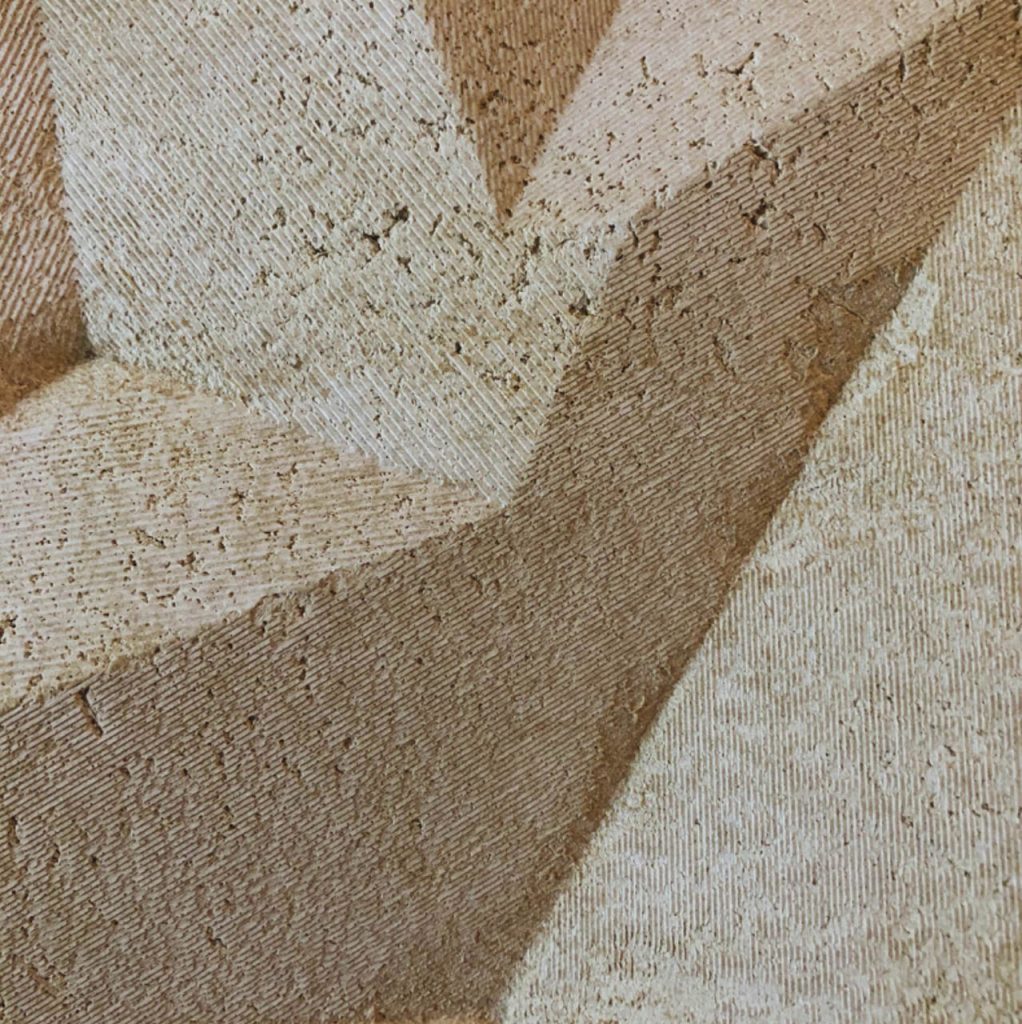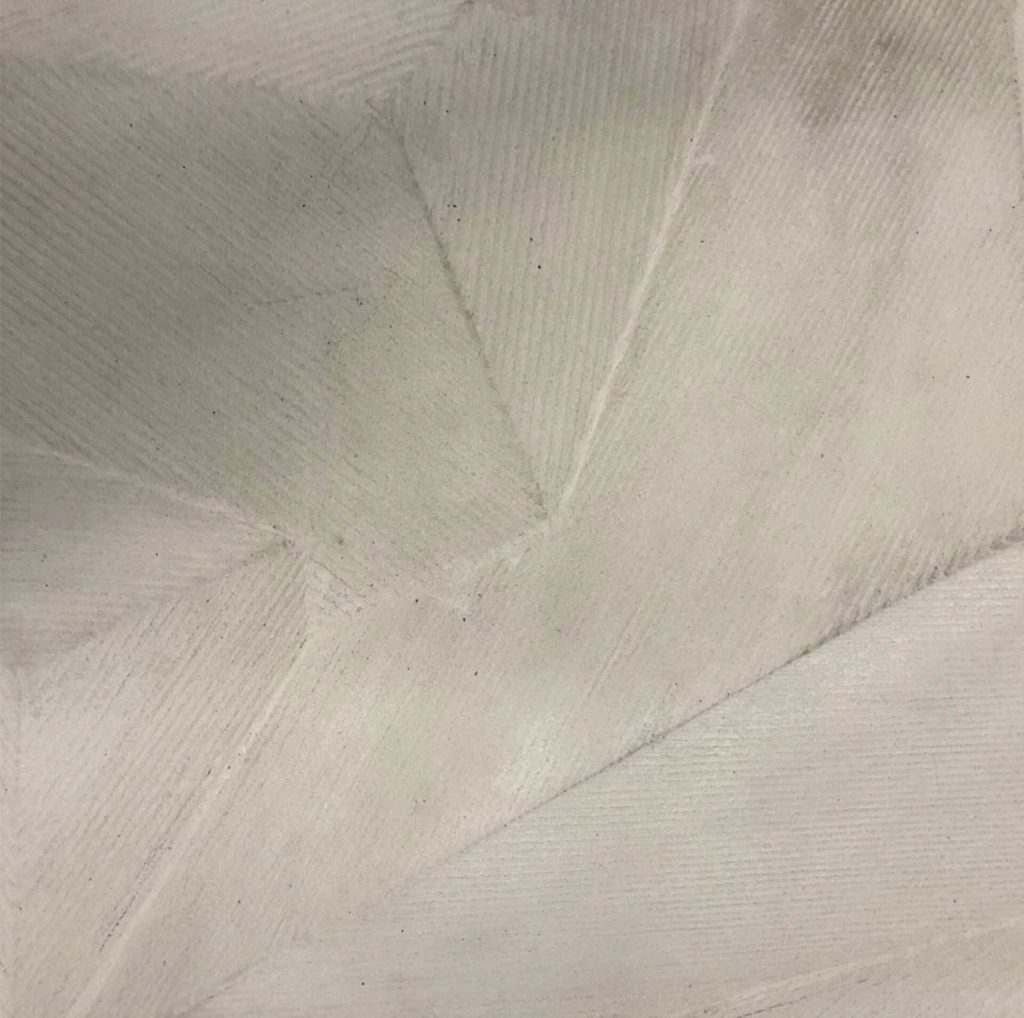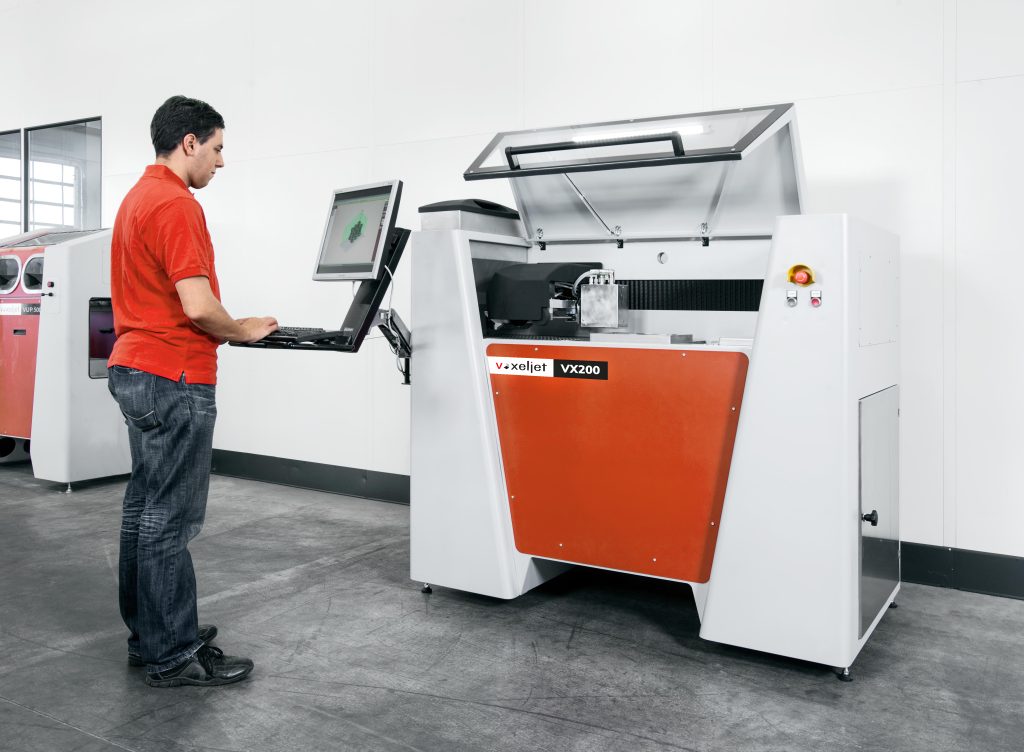Binder jet 3D printer manufacturer voxeljet and Austrian material recycling company Parastruct GmbH have conducted a proof of concept for the use of recycled, biogenic, and mineral waste in binder jet 3D printing.
The 3D printability study assessed the voxeljet VX200 3D printer with Parastruct’s Ecomould recycled material set, which consists of biogenic residue from the construction industry, and a mineral binder.
Parastruct’s material and binder offerings are fully recyclable, and can reportedly reduce material consumption by 90%, minimizing disposal costs in the process.
The two companies will now work to further develop this technology within mold making, including the cold casting of concrete and ceramics and laminating applications. Mold making applications are forecast to grow 7-9% by 2025.
Voxeljet and Parastruct also hope to collaborate with interested parties to increase the sustainability of the construction industry in a future funding project.

Sustainable mold making with voxeljet and Parastruct
Parastruct’s offering reintroduces unused mineral materials back into the manufacturing process through 3D printing. These recycled materials include construction waste and biogenic resources, such as wood flour and sawdust.
Growing interest and demand for sustainable material offerings are being driven by increasing legal obligations and customer requirements as part of Corporate Social Responsibility (CSR) strategies. The implementation of stricter sustainability guidelines, such as the EU Green Deal, has also motivated a move towards greener additive manufacturing processes.
The Ecomould material can reportedly help companies achieve these sustainability goals. Indeed, Ecomould emits -108.3kg CO2 per 1 m2 of mold surface, a significantly lower carbon footprint than conventionally manufactured sand-phenolic resin molds.
According to voxeljet, 3D printing with Parastruct material also enables companies to make notable savings by eliminating disposal costs. These costs can be as high as €750-100 per ton for construction waste and €70-180 per ton for wood. The partners’ recycled 3D printing capabilities can also reduce resource expenditure to improve profitability.
At the end of the product life cycle, Ecomould-produced molds can be shredded and reused as material in 3D printing as part of a circular supply chain. This significantly reduces the material’s carbon footprint.

During the proof of concept assessment, voxeljet’s VX200 large-format binder jet 3D printer was utilized in conjunction with the Euromold material. Designed for research and development applications, the VX200 features a 9 liter 3D print volume and can achieve resolution of up to 254 dpi.
The VX200 is not the only voxeljet 3D printer well suited to the recycled Ecomould material. All voxeljet 3D printers are open source, with their 3D printing parameters flexibly adaptable to meet a range of material sets. Moreover, voxeljet 3D printers offer a range of build sizes as high as 4 x 2 x 1 m. This reportedly enables easy scaling of Ecomould to larger, high-production systems.

Recycling to secure AM supply chains
In the 2024 3D Printing Industry Executive Survey, additive manufacturing leaders outlined the 3D printing trends for 2024. Supply chain sustainability and reducing the environmental impact of additive manufacturing were highlighted as two key trends to look out for this year.
These trends were also pertinent in 2023. Last year, industrial 3D printing materials developer 6K additive partnered with Surgical Metal Recycling (SMR) to recycle end of life surgical implants into new titanium powder for 3D printing.
Announced during RAPID + TCT 2023, this collaboration utilizes 6K’s UniMelt production-scale microwave plasma platform to create the powder, which can then be used to 3D print new implants. Leslie Frost, Senior Director of Marketing at 6K Additive, told 3D Printing Industry that this process will allow for an “incredibly sustainable and circular supply chain.”
Elsewhere, North Carolina-based titanium developer IperionX announced that it would supply Ford with 100% recycled titanium. This partnership is part of the automotive manufacturer’s goal to achieve carbon neutrality by 2050.
The Scope of Work agreement forms part of an ongoing collaboration between the two companies to design, test, and 3D print titanium components for Ford Performance production vehicles. Notably, IperionX’s titanium can be fully recycled at the end of the product’s life, allowing for a fully circular, low-carbon material supply chain. According to IperionX, this is not possible with other commercially available titanium production processes.
Subscribe to the 3D Printing Industry newsletter to keep up to date with the latest 3D printing news. You can also follow us on Twitter, like our Facebook page, and subscribe to the 3D Printing Industry Youtube channel to access more exclusive content.
Are you interested in working in the additive manufacturing industry? Visit 3D Printing Jobs to view a selection of available roles and kickstart your career.
Featured image shows voxeljet VX200 binder jet 3D printer. Photo via voxeljet.


